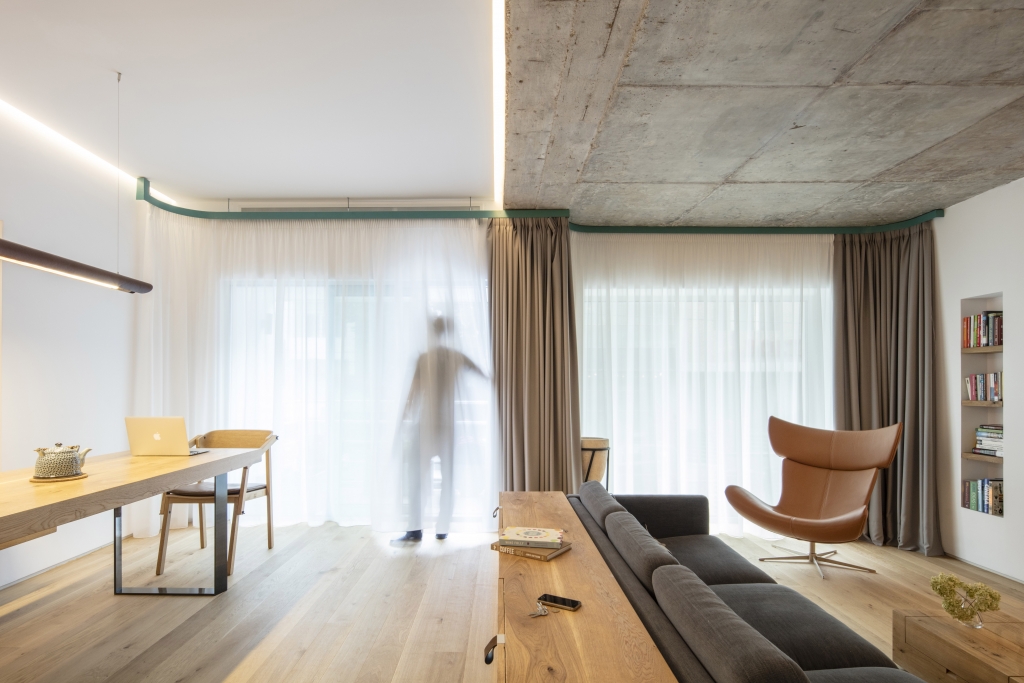Finding plots in London and other major UK cities
With empty plots of land being difficult and often very expensive to come by, it’s no wonder that many self-builders and renovators instead convert an existing building into their dream home, applying for a change of use to residential. This is particularly of interest in the UK’s bigger cities where possibilities for self-building are harder to find.
Change-of-use projects can provide fantastic opportunities to add architectural character and interest, like the industrial feel of the house pictured above from Anamaria, an architectural designer on Design for Me, who works on change-of-use projects. Click here to see her profile and shortlist her for your project.
Run-down commercial properties can be much more affordable than their residential neighbouring plots for example, so could represent a fantastic investment if your primary focus is on the land itself, rather than the building that stands on it. Many self-builders are, anyway, looking for an opportunity to start from scratch and build something that is truly bespoke to their requirements, which can involve demolition or gutting of the existing building.
Planning use classes
Part A – Shops and services
- A1 Shops
- A2 Financial and professional services
- A3 Restaurants and cafés
- A4 Drinking establishments
- A5 Hot food takeaways
Part B – Business and industry
- B1 Business (offices)
- B2 General industrial
- B8 Storage or distribution
Part C – Residential
- C1 Hotels (including guest houses)
- C2 Residential institutions
- C2A Secure Residential Institution
- C3 Dwelling houses – this class is split into three parts:
- C3(a) used by a single person or family
- C3(b): up to six people living together as a single household and receiving care.
- C3(c) allows for groups of people (up to six) living together as a single household that do not fall within C3 or C4. E.g. a small religious community may fall into this section as could a homeowner who is living with a lodger.
- C4 Houses in multiple occupation (HMO) – a house shared by between three to six unrelated individuals who share basic amenities such as kitchen/bathroom.
Part D – Non residential institutions
- D1 Non-residential institutions
- D2 Assembly and leisure
Sui Generis
- Uses that do not fall into any of the above. Including: betting offices/shops; pay day loan shops; theatres; larger houses in multiple occupation; hostels providing no significant element of care; scrap yards; petrol filling stations and shops selling and/or displaying motor vehicles; retail warehouse clubs, nightclubs; launderettes; taxi businesses and casinos.
Do I need planning permission for change of use to residential?
Good news – there are some instances where planning permission is not required for change of use to residential, if it falls within permitted development. However, it’s always recommended that you check with your local planning authority first, and it’s advisable to obtain a certificate of lawfulness. This may be a useful document when selling your property in the future.
Permitted development for change of use to residential C3 (dwellinghouses):
- A1 and A2 (shops and professional and financial services) – up to 150m2 and subject to Prior Approval.
- B8 (storage and distribution) – subject to Prior Approval.
- C4 (small houses in multiple occupation)
- Sui Generis (Casinos, betting offices, pay day loan shops and agricultural buildings only) – subject to Prior Approval.
Planning permission for development
However, even if you do not need planning permission for change of use to residential, you may well need it for the actual development of the property if you’re changing the external appearance or are within a conservation area.
Building regulations for a residential conversion
Even if you do not require planning permission, obtaining Building Regulations approval is still necessary. Conversions, such as transitioning from flats to a house or vice versa, are considered a change of use under the Building Regulations. Consequently, Part L requirements come into play, necessitating the enhancement of thermal elements if they are performing inadequately in their current state. To demonstrate the current performance of walls, floors, roofs, and windows, a SAP assessment will be required.
Your Building Control officer may stipulate the need for insulation in external walls, floors, and roofs. In the case of single-glazed windows, an upgrade to double glazing may also be necessary. This can be a more costly endeavour, particularly in period properties where you are replacing sash windows.
Check with an architect
Before proceeding with a purchase for a non-residential building with an intention to convert it to a house, it’s always worthwhile asking an architect to undertake a feasibility study. As part of this, they can find out what permissions will be required, help you understand what the restraints and opportunities of the site will be, and begin to explore the design potential for your new home.
Get a good architect on your side
It’s really worthwhile finding the right architect to help you through this planning phase of your project. Here at Design for Me we can match you with the best home architects for your project and arrange initial consultations for free. Use the form below to get started and we’ll be happy to help find the right person for you!
Emily Design for Me

